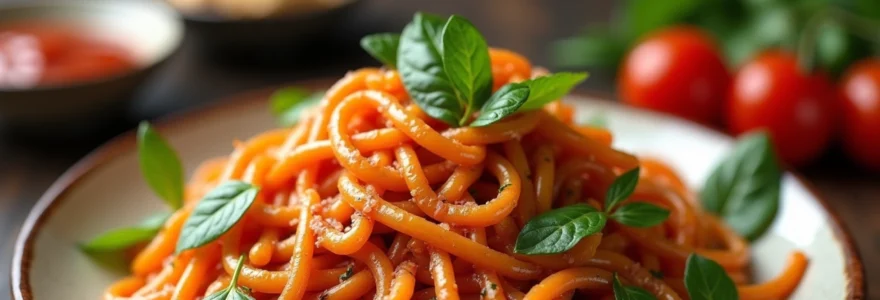Traditional recipes have long been the cornerstone of culinary heritage, passed down through generations and deeply rooted in local cultures. However, in today’s interconnected world, these time-honoured dishes are undergoing a fascinating transformation. The fusion of global influences, technological advancements, and changing dietary preferences is reshaping the landscape of traditional cooking. This evolution presents both challenges and opportunities for preserving culinary traditions while embracing innovation and cross-cultural exchange.
Culinary globalization: Cross-Cultural recipe adaptation
As borders blur and cultures intertwine, traditional recipes are no longer confined to their places of origin. Chefs and home cooks alike are experimenting with ingredients and techniques from diverse culinary traditions, creating unique fusion dishes that bridge cultural gaps. This cross-pollination of flavours and cooking methods has given rise to entirely new categories of cuisine, challenging the very notion of what constitutes “traditional” food.
The globalization of ingredients has played a pivotal role in this transformation. Exotic spices, once rare and precious, are now readily available in supermarkets worldwide. This accessibility has empowered cooks to incorporate diverse flavours into their traditional recipes, resulting in innovative twists on classic dishes. For instance, the addition of lemongrass to a traditional Italian risotto or the use of miso in a French bouillabaisse exemplifies how global ingredients are reshaping culinary landscapes.
Moreover, the migration of people across continents has led to the adaptation of traditional recipes to suit new environments and available ingredients. This process of culinary acculturation has given birth to unique hybrid cuisines, such as Indo-Chinese or Tex-Mex, which blend elements from multiple culinary traditions to create something entirely new yet rooted in tradition.
Fusion cuisine: blending traditional techniques with global ingredients
Fusion cuisine represents the epitome of culinary globalization, where traditional cooking techniques are combined with ingredients from different parts of the world. This innovative approach to cooking has revolutionized the culinary scene, challenging chefs to think outside the box and create dishes that are both familiar and exotic.
Nobu matsuhisa’s Japanese-Peruvian fusion revolution
One of the most influential figures in fusion cuisine is chef Nobu Matsuhisa, whose Japanese-Peruvian creations have set a new standard for culinary innovation. Matsuhisa’s signature dishes, such as black cod with miso and tiradito, seamlessly blend Japanese techniques with Peruvian flavours, creating a unique culinary experience that has inspired chefs worldwide.
The success of Nobu’s fusion cuisine lies in its respect for traditional techniques while embracing the flavours and ingredients of different cultures. This approach has not only created a new culinary language but has also encouraged chefs to explore their own cultural heritage through a global lens.
Molecular gastronomy meets ancient cooking methods
Another fascinating development in the evolution of traditional recipes is the integration of molecular gastronomy techniques with ancient cooking methods. Chefs are using scientific principles to deconstruct and reconstruct traditional dishes, creating new textures and presentations while preserving familiar flavours.
For example, the traditional Spanish dish of gazpacho might be transformed into a foam or gel, retaining its essential flavour profile while offering a completely new sensory experience. This marriage of old and new challenges our perceptions of traditional cuisine and opens up new possibilities for culinary expression.
Street food hybridization: tacos al pastor to sushirritos
Street food, often considered the most authentic representation of a culture’s culinary traditions, has not been immune to the forces of globalization. The hybridization of street food has given rise to innovative creations that capture the essence of multiple cultures in a single dish.
One prime example is the evolution of tacos al pastor, a Mexican dish with Middle Eastern roots, into fusion creations like Korean bulgogi tacos or even sushirritos (sushi burritos). These hybrid street foods demonstrate how traditional recipes can adapt and evolve in response to changing tastes and cultural influences.
Farm-to-table movement’s impact on global recipe interpretation
The farm-to-table movement has had a profound impact on the interpretation of global recipes in local contexts. This philosophy, which emphasizes the use of fresh, locally sourced ingredients, has encouraged chefs to adapt traditional recipes to suit the ingredients available in their immediate environment.
As a result, you might find a Japanese-inspired dish made with locally grown produce in California or a French classic reimagined with ingredients native to Australia. This localization of global cuisines not only supports sustainable farming practices but also creates unique regional variations of traditional recipes.
Digital transformation of recipe preservation and sharing
The digital age has revolutionized the way traditional recipes are preserved, shared, and discovered. Online platforms and social media have created unprecedented opportunities for culinary enthusiasts to connect, exchange recipes, and learn about diverse food traditions from around the world.
Food blogging platforms: from epicurious to tasty
Food blogging platforms have become virtual repositories of traditional recipes, often accompanied by personal stories and cultural context. Sites like Epicurious and Tasty have made it easier than ever for home cooks to access and experiment with recipes from different cultures. These platforms not only preserve traditional recipes but also encourage users to share their own adaptations, contributing to the ongoing evolution of culinary traditions.
The democratization of recipe sharing has led to a greater appreciation for diverse culinary traditions and has empowered individuals to become custodians of their cultural heritage through food. You can now find detailed instructions for making authentic dishes from virtually any cuisine, complete with video tutorials and user reviews.
Social media’s role in recipe virality and cultural exchange
Social media platforms like Instagram, TikTok, and Pinterest have transformed the way people discover and engage with recipes. Visual content, such as food photography and short cooking videos, has made traditional recipes more accessible and appealing to a global audience. The viral nature of social media has also contributed to the rapid spread of food trends, sometimes leading to the global popularization of traditional dishes that were previously little-known outside their place of origin.
For example, the Korean dish dalgona coffee gained worldwide popularity during the COVID-19 pandemic through social media challenges, introducing many to a traditional Korean treat in a new context. This phenomenon demonstrates how digital platforms can catapult traditional recipes into the global spotlight, often leading to creative adaptations and reinterpretations.
Ai-powered recipe generation and customization
Artificial intelligence is playing an increasingly significant role in the evolution of traditional recipes. AI-powered recipe generators can analyze thousands of existing recipes to create new combinations and variations, often resulting in innovative fusion dishes that blend elements from different culinary traditions.
Moreover, AI algorithms can customize traditional recipes based on dietary restrictions, available ingredients, or personal preferences. This technology not only makes traditional recipes more accessible to those with specific dietary needs but also encourages experimentation and adaptation of classic dishes.
Blockchain technology for authentic recipe provenance
As traditional recipes evolve and spread globally, questions of authenticity and provenance become increasingly important. Blockchain technology offers a potential solution by providing a secure, immutable record of a recipe’s origin and evolution. This could help preserve the integrity of traditional recipes while allowing for transparent documentation of adaptations and variations.
Imagine being able to trace the lineage of a particular dish, from its traditional roots to its modern interpretations, all recorded on a blockchain. This technology could revolutionize the way we understand and appreciate the evolution of culinary traditions in a globalized world.
Ingredient sustainability and local adaptations in global recipes
As awareness of environmental issues grows, the sustainability of ingredients used in traditional recipes has come under scrutiny. Chefs and home cooks are increasingly seeking local, sustainable alternatives to ingredients that may be difficult or environmentally costly to source from their traditional regions of origin.
This shift towards sustainability has led to creative adaptations of traditional recipes. For instance, a chef in Northern Europe might substitute locally sourced mushrooms for truffles in an Italian dish, or use a native fish species in place of bluefin tuna in a Japanese recipe. These adaptations not only reduce the carbon footprint associated with ingredient sourcing but also create unique regional variations of global dishes.
The emphasis on sustainability has also revived interest in traditional preservation techniques and forgotten local ingredients. Fermentation, pickling, and foraging have seen a resurgence, with chefs incorporating these traditional practices into modern cuisine. This trend not only promotes sustainability but also helps preserve culinary heritage and biodiversity.
Cultural appropriation vs. culinary appreciation in recipe evolution
The globalization of cuisine has sparked important discussions about the fine line between cultural appreciation and appropriation. As traditional recipes are adapted and reinterpreted across cultural boundaries, questions arise about ownership, authenticity, and respect for culinary heritage.
Case study: kimchi’s journey from korean staple to global superfood
The story of kimchi’s rise to global popularity serves as an interesting case study in the complexities of culinary globalization. Once a staple of Korean cuisine, kimchi has become a global superfood, appearing in fusion dishes and on menus worldwide. While this has increased appreciation for Korean culinary traditions, it has also led to concerns about the authenticity of commercialized versions and the potential loss of cultural context.
The kimchi case highlights the importance of acknowledging the cultural origins of traditional recipes while allowing for innovation and adaptation. It also raises questions about who benefits from the global popularization of traditional foods and how to ensure that the communities of origin are recognized and rewarded.
Ethical considerations in commercializing traditional recipes
As traditional recipes gain popularity in the global market, ethical considerations come to the forefront. How can traditional knowledge be protected while allowing for innovation? What responsibilities do chefs and food companies have when profiting from traditional recipes?
Some argue for the implementation of culinary copyrights or geographical indications to protect traditional recipes and ingredients. Others advocate for profit-sharing models that ensure benefits flow back to the communities of origin. These discussions are crucial in shaping a more equitable and respectful approach to the evolution of traditional recipes in a globalized world.
Unesco’s intangible cultural heritage and culinary traditions
UNESCO’s recognition of culinary traditions as intangible cultural heritage has brought attention to the importance of preserving traditional foodways. This designation not only celebrates the cultural significance of traditional recipes but also encourages their preservation and sustainable practice.
The inclusion of culinary traditions in UNESCO’s list has raised awareness about the need to protect and promote traditional recipes as part of our global cultural heritage. It has also sparked discussions about how to balance preservation with the natural evolution of culinary traditions in a changing world.
Nutritional science and dietary trends reshaping traditional recipes
Advancements in nutritional science and changing dietary trends are having a significant impact on the evolution of traditional recipes. As our understanding of nutrition grows and dietary preferences shift, traditional dishes are being adapted to meet new health standards and lifestyle choices.
Ketogenic adaptations of Carbohydrate-Rich cultural dishes
The popularity of ketogenic diets has led to creative adaptations of traditionally carbohydrate-rich dishes. For example, cauliflower rice has become a popular low-carb substitute in many Asian and Latin American recipes, while almond flour is being used to create keto-friendly versions of traditional baked goods.
These adaptations raise interesting questions about the essence of traditional recipes. Can a dish still be considered traditional if its fundamental ingredients are changed? How do we balance health trends with cultural authenticity?
Plant-based reinterpretations of classic Meat-Centric recipes
The rise of plant-based diets has led to innovative reinterpretations of classic meat-centric recipes. Chefs and food scientists are developing plant-based alternatives that mimic the taste and texture of meat, allowing for vegan versions of traditional dishes like beef bourguignon or chicken tikka masala.
This trend not only makes traditional recipes accessible to those following plant-based diets but also challenges our perceptions of what constitutes a traditional dish. It invites us to consider whether the essence of a recipe lies in its specific ingredients or in its flavour profile and cultural significance.
Microbiome research influencing fermented food recipes
Recent research on the importance of gut health has sparked renewed interest in traditional fermented foods. As a result, ancient fermentation techniques are being revived and adapted to create new probiotic-rich foods that cater to modern health concerns.
This trend has led to the popularization of traditional fermented foods like kombucha, kefir, and kimchi in regions where they were previously unknown. It has also inspired the creation of new fermented products that blend traditional techniques with modern flavours and ingredients, further contributing to the evolution of traditional recipes in the context of current health trends.
The intersection of traditional culinary wisdom and modern nutritional science is creating a new paradigm for healthy eating that respects cultural heritage while embracing scientific advancements. This synthesis of old and new is reshaping our approach to food and nutrition, demonstrating the dynamic nature of culinary traditions in response to evolving knowledge and societal needs.


